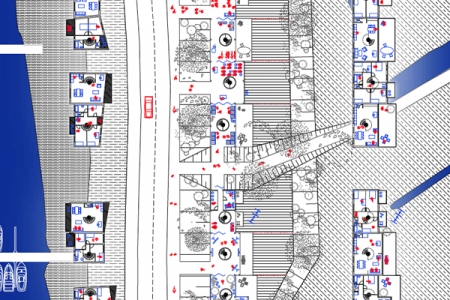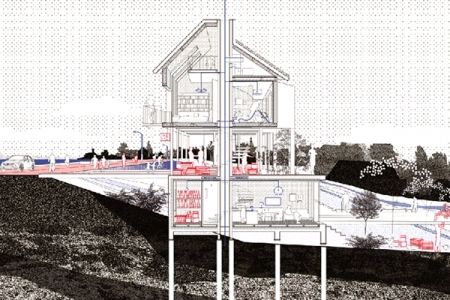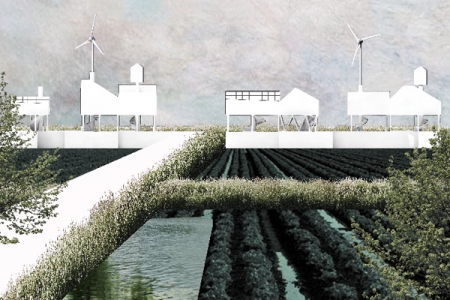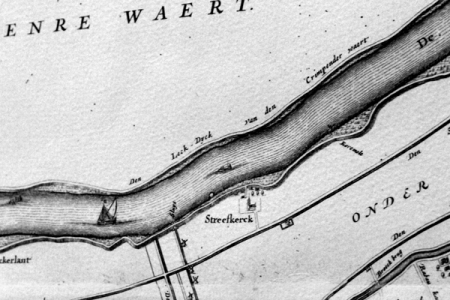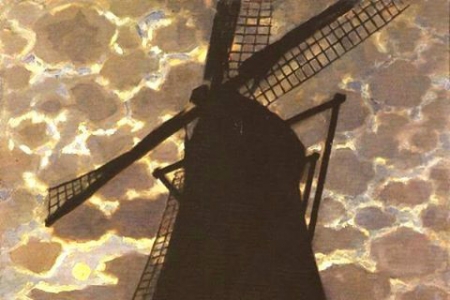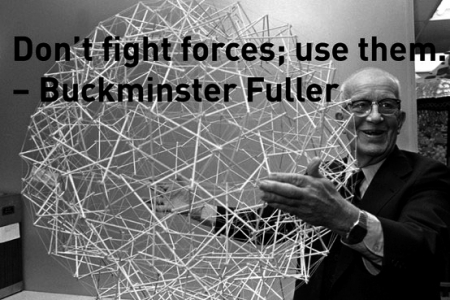In-Between
Streefkerk (NL) – Lauréat
DONNÉES DE L’ÉQUIPE
Représentant d'équipe : Marie Saladin (FR) – architecte ; Associée : Marion Vassent-Garaud (FR) – architecte
105A Schiedamseweg, 3026AE Rotterdam – Nederland
+33 6 68 89 50 87 – mariesaladin.ms@gmail.com
Voir la liste complète des portraits ici
Voir la page du site ici

M. Saladin & M. Vassent-Garaud
INTERVIEW en anglais
Cliquer sur les images pour les agrandir
1. How did you form the team for the competition?
We met at the Architecture School of Versailles. We are used to collaborating together on projects and later in a professional context in one of the team of the urban consultation for the Atelier du Grand Paris.
We both currently work as employees – one in a landscape and urban planning office in Paris while the other recently moved to Rotterdam for a position in an architecture office. The complementarity of our backgrounds has made this collaboration on Streefkerk –confronting large landscape and Dutch architecture issues– obvious.
2. How do you define the main issue of your project, and how did you answer on this session main topic: Adaptability through Self-Organization, Sharing and/or Project (Process)?
We choose to work on the Adaptability through the housing's scale. On this site, 7 typical local houses have been demolished and we propose to bring them back in a new form, more adapted, more efficient and more economic by approaching the new dike's profile as an advantage instead of a constraint. To us, the re-appropriation of this site is not only a matter of design, but it is also closely related to a number of ecological, economic, architectural, urban, historical and social matters, which we aim to address in this case study house.
The concept of Sharing is another important problematic in the project. We propose a new way of living as an answer to the "future-proof dimension" request. Instead of creating a series of individual independent houses, the proposed development is rather designed as a network. It not only aims at enhancing connectivity between the individual buildings on a social level, but also as a group of energy prosumers. Each house is designed around an energy core to capture natural power from the sun, wind and rainwater. The harvested energy is transformed and shared through the slab of the in-between space that connect several houses. Because each house specializes in one type of harvest they can achieve a complete sense of autonomy only thanks to their networked character.
3. How did this issue and the questions raised by the site mutation meet?
The dike is not only a piece of infrastructure protecting the city from flooding; since the origins it is also a ribbon of mobility that defines the urban development and enables economical connection with the surroundings for the inhabitants. The consequence of the rising of the dike may imply an artificial divorce of almost 7 meters between the urban quality of the city created by the connection to the street and the rural quality created by the connection with the agriculture. Both connections with the street and the ground level are necessary. For that reason we decided to base our design on a typological system that allows to link those levels and enable creation of new possible relationships between them and their surroundings.
4. Have you treated this issue previously? What were the reference projects that inspired yours?
The rising water level issue and dikes management is very specific to the Netherlands, it is a singular situation we had never been confronted to before. However, we were able to create connections with others thematics we worked on, like the relationship between housing and large territorial infrastructure in the Grand Paris studies or aboveground construction, renewable energies, intimacy / public contrast, public space design, etc. We mainly approach this site by learning from the Streefkerk territory, we studied the history a lot and observed the site context. The region is characterized by history with the physical trace of traditional. Windmills are witnesses of the old struggle of Dutch people against water and how they took advantage of a difficult situation through an architecture machine. Because we are both French, we also learned from Dutch design. In that sense our approach plays with those specificities and this project is a tribute to windmills, transparent ground floors and extreme stairs.
5. Today –at the era of economic crisis and sustainability– the urban-architectural project should reconsider its production method in time; how did you integrate this issue in your project?
In this project we address some of those aspects through a development of a particular example – a case study of an individual home for the city of Streefkerk. Rather than zooming from a large scale to the level of the detail, we stem the project from a typological proposal of a house, with which we aim to create a resonance on a larger, territorial scale. The proposal is not contextual, it is a principle to develop and repeat like a formula. It can be easily adapted, phased, changed to others situations along the dike.
About the human process, the typology we created provides both the inhabitants and the development of the city with an open field of possibilities. This simple modification created by splitting the volume of the old houses into two pieces creates a new space between the air and the ground, between top and bottom and between the public and the domestic life. This newly created void is addressed at the dikes residents. It is flexible and open for appropriation and it does not impose anything. It can be separated, left open or combine both approaches. It also adds more square meters to houses and allows more social interaction and service exchange.
6. Is it the first time you have been awarded a prize at Europan? How could this help you in your professional career?
Yes, it is the first time we have been rewarded. We feel honoured by such an achievement and we are looking forward to continue the dialog with Waterschap Rivierenland to contribute in the future development of dikes in the Streefkerk region.
We believe that Europan is a great platform as an international institution that will hopefully help us to promote our professional career.
